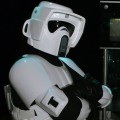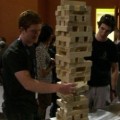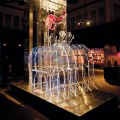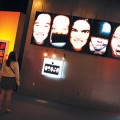“Remember—do not try anything you are about to see at home!”
These words of warning are uttered at the beginning of every episode of “Mythbusters,” the Emmy Award winning Discovery Channel show that features the sometimes wacky, but always scientifically grounded and highly entertaining experiments of hosts Adam Savage, Jamie Hyneman, Tory Belleci, Kari Byron and Grant Imahara.
Fans of the locally produced program can now safely immerse themselves into that scientific fray at “Mythbusters: The Explosive Exhibition,” a new interactive exhibit at the Tech Museum in San Jose that offers visitors the chance to try several hands-on experiments, watch live demonstrations, see props from the show and more.
“We worked with the development team to make it as ‘Mythbuster-y’ as possible, minus the danger and jagged edges that are generally in our shop,” says show co-host and Bay Area resident Kari Byron. “It was crazy; when I first walked in I was shocked at how much they captured our shop and the ‘Mythbuster’ feel, down to the smallest details.”
Would-be scientists can study up in “The Blueprint Room,” hunker down in “The Workshop,” then find out if their hypotheses are confirmed or busted—and they won’t need paramedics standing by at the ready.
One particularly popular experiment from the TV program called “Running In The Rain” has been re-created at the museum—testing if participants get more wet running or walking through simulated rain at the museum.
Byron says this is one of her favorite parts of the exhibit.
“They have created a way to bring this indoors with these two tunnels that you go down, you run down one side, and walk down the other, and then go stand in front of a mirror to see the iridescent paint that’s in the water to see how much rain hit you,” she says. “You can deduce for yourself whether it’s better to walk or run.”
“They are recording all of the data, so that we can get a huge sample size from the experiment, and we might even find out that our results are busted from the show.”
The ‘Mythbusters’ exhibit emphasizes visitor participation with many exciting interactive components, encouraging both children and adults to become engaged with science, which is exactly what the people behind the show were hoping for.
“My favorite part of the exhibit is watching the mom or dad walking through with the kid, and they are both having just as much fun,” Byron says. “You can just see that spark, that ‘a-ha!’ moment where they realize that science isn’t memorizing the components of something from a book, it’s really experiential.
“This is the perfect thing for us; this is exactly what we love as part of the show—science being something that you get your hands dirty with.”
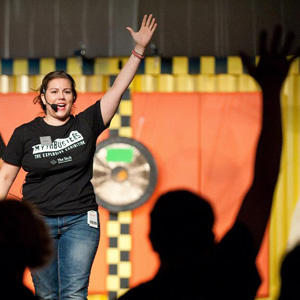
 Halloween Costume Guide
Halloween Costume Guide  Rush Lives on at HP Pavilion
Rush Lives on at HP Pavilion 